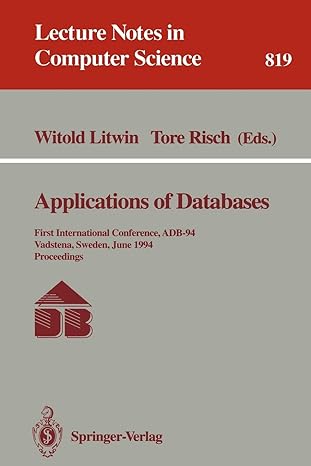Question
What is the asymptotic running time of the following codes and why? Assume |s|= |t|= n. CODE 1: def longest_substring(s, t): Finds the longest substring
What is the asymptotic running time of the following codes and why? Assume |s|= |t|= n.
CODE 1:
def longest_substring(s, t): """Finds the longest substring that occurs in both s and t""" best = '' for s_start in range(0, len(s)): for s_end in range(s_start, len(s)+1): for t_start in range(0, len(t)): for t_end in range(t_start, len(t)+1): if s[s_start:s_end] == t[t_start:t_end]: current = s[s_start:s_end] if len(current) > len(best): best = current return best
CODE 2:
def longest_substring(s, t): """Finds the longest substring that occurs in both s and t""" best = '' for length in range(min(len(s),len(t))+1): ans = k_substring(s, t, length) if ans is None: return best best = ans return best
def k_substring(s, t, k): """Finds a substring of length k in both s and t if there is one, and returns it. Otherwise, returns None.""" s_substrings = set() # Put all substrings of s of length k into a set: s_substrings for s_start in range(len(s)-k+1): current = s[s_start : s_start+k] s_substrings.add(current) # For every substring of t of length k, look for it in # s_substrings. If it's there, return it. for t_start in range(len(t)-k+1): current = t[t_start : t_start+k] if current in s_substrings: return current return None
Explain why the asymptotic runtimes are the way they are.
Step by Step Solution
There are 3 Steps involved in it
Step: 1

Get Instant Access to Expert-Tailored Solutions
See step-by-step solutions with expert insights and AI powered tools for academic success
Step: 2

Step: 3

Ace Your Homework with AI
Get the answers you need in no time with our AI-driven, step-by-step assistance
Get Started


